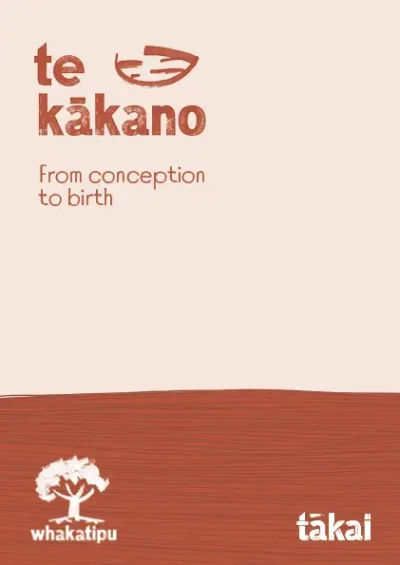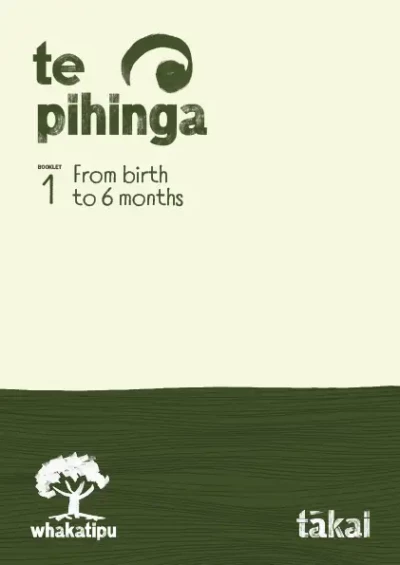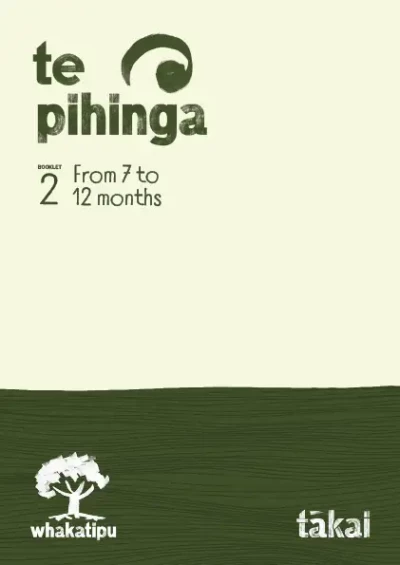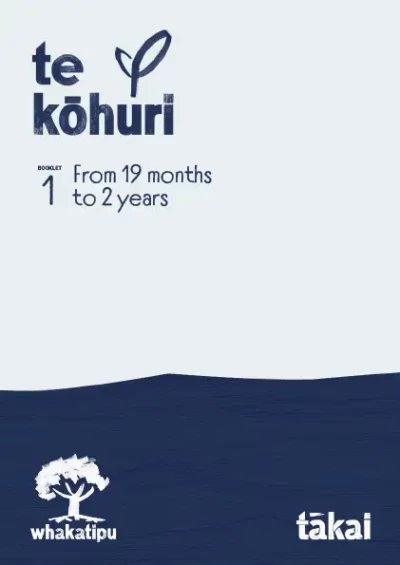
Pānuitia taku tino kōrero anō anō Read my favourite story again and again
Reading to a baby can start before birth. It's a fun activity for parents, and it builds baby's language skills and social and emotional development.
Read my favourite story again and again
Pānuitia taku tino kōrero anō anō – Read me my favourite story again and again
Parents can introduce baby to books from a very young age. They can even read to baby before birth. This helps baby become acquainted with the sounds of their parents’ voices.
Reading together not only helps baby learn language, but is also a very special time for baby with the parents. Baby is cuddled up close, listening to a familiar voice and learning very early that reading is pleasurable. When babies are read to from a young age, it’s easier for them to learn to read later on, and it also helps baby learn to communicate.
Exploring books
Baby may want to explore books at first. Babies explore using their senses, so early on, mouthing will be one of the best ways for baby to find out about books.
Parents can offer sturdy books that will stand up to some chewing – board books, fold-out books and cloth books are good at this stage. Vinyl books are great for bath play, and they can withstand many dribbles. Baby will show more interest in books with big, simple pictures and bright colours, and in the first few months, baby may become calm when a familiar book is read to them.
After mouthing and chewing books, babies become interested in turning pages and pointing at familiar objects. Parents can use different voices for the characters in a book, so baby hears different sounds. Baby may try to imitate some sounds.
When parents read, baby begins to tune in to the sounds of their language, becomes familiar with the rhythm of speech and learns how sentences are put together. These are building blocks for language development.
Reading to babies also increases the number of words they can understand and say – the language used in books is often richer and has more variety than language used in conversation.
Following baby’s lead
Baby may only want to be read to for a short time. Parents can follow baby’s lead with this – it doesn’t matter if the story isn’t finished. Or baby may have a favourite picture or page that they want to keep looking at. When baby shows an interest in a picture parents point to and talk about, this is called ‘shared attention’, and it helps babies develop language and communication skills.
Repeating a book, a part of a story or even a word, strengthens connections in the brain, building efficient, permanent pathways for reading and language skills. Reading stories over and over helps babies anticipate what’s coming next – this can be a lot of fun for them.
Using books as part of a bedtime routine can calm a baby and help them settle to sleep. Cuddling up and reading together at any time can be a ‘quiet’ time. This can be a time that parents love as well.
Making special books for baby
Parents can make their own books – stories can be told about the family, with family photos, or pictures can be cut from magazines to go in a scrapbook.
It is never too early to start reading. Babies learn to love books through hearing parents' voices and being held close. It’s also never too late to start. No matter when parents start reading to their baby, they’re strengthening connections in the brain that build language, reading and social and emotional skills.
Try an activity
'I can' book – He pukapuka 'Ka taea e au'
Help tamariki feel special and encourage their reading by making a scrapbook of the things they have achieved.
Summary
- It is never too early or too late to start reading to baby.
- It’s helpful for parents to follow their baby’s lead when reading with them.
- Reading increases baby’s vocabulary and develops language, imagination, reading and social and emotional skills.
- The language used in books can be richer and have more variety than language used in conversations.
- Parents can make their own books and stories.
- Reading can be a calming activity for both baby and parents.
Brain development information has been woven throughout the Whakatipu booklets, describing what's happening for pēpi in their 'hinengaro mīharo’ (amazing brain) at different stages. This gives parents simple neuroscience information to support them with their parenting:
- Te Kākano, pages 16, 22 and 32 – hearing sounds in the womb
- Te Pihinga 1, page 25 – listening to language
- Te Pihinga 2, page 25 – learning communication skills
- Te Kōhuri 1, page 9 – repeating words















